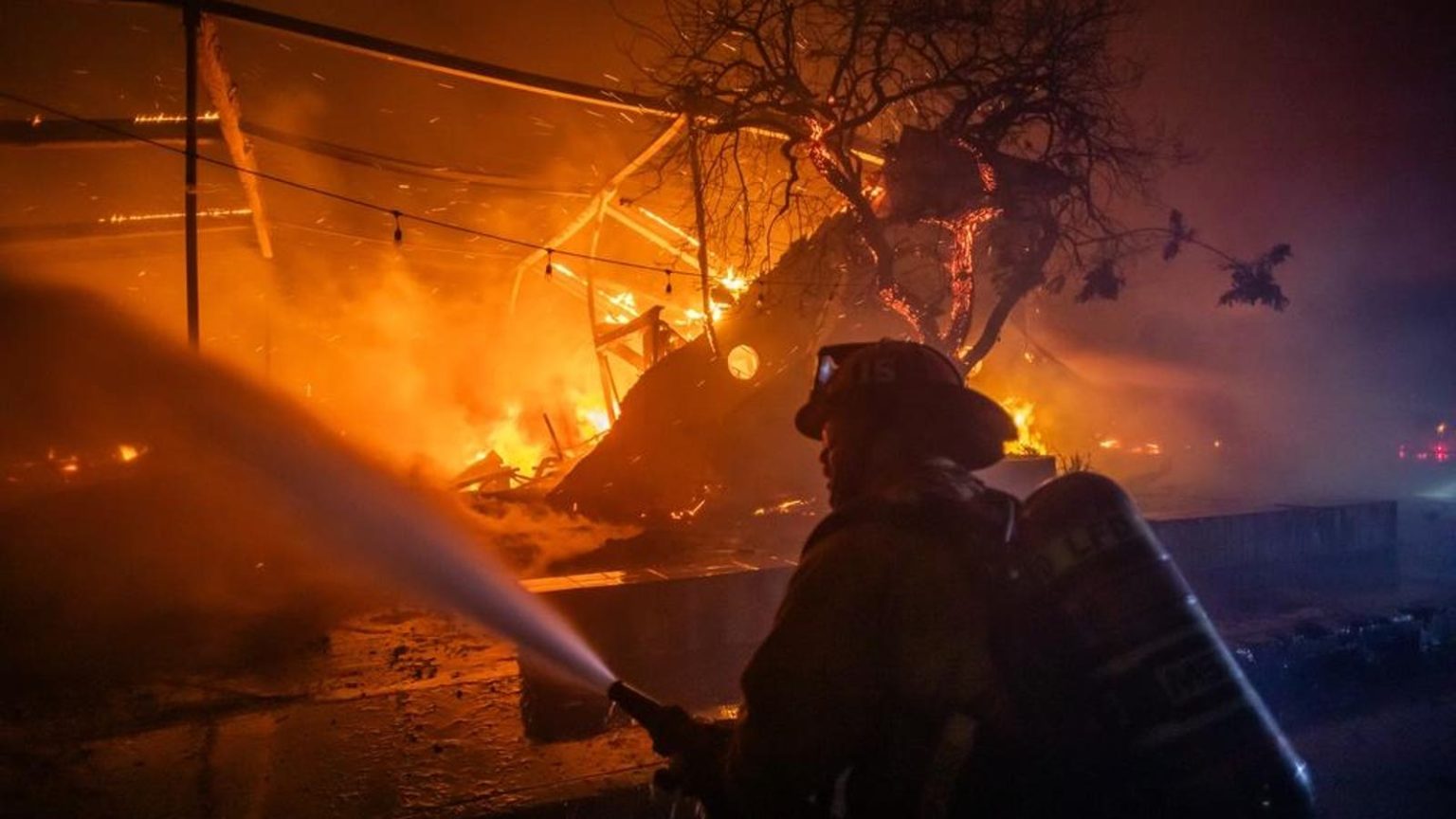Southern California is currently battling multiple wildfires fueled by strong Santa Ana winds and dry conditions, prompting widespread evacuations and impacting daily life across the region. The largest of these, the Palisades Fire, has scorched nearly 16,000 acres near the affluent coastal neighborhood of Pacific Palisades, forcing approximately 30,000 residents to flee their homes. Simultaneously, the Eaton Fire in the foothills north of Pasadena has grown to over 10,600 acres, tragically claiming the lives of two civilians and resulting in numerous injuries and evacuations impacting hundreds of homes in Altadena, Pasadena, and Sierra Madre. These two major fires, along with two smaller blazes – the Hurst Fire and the Woodley Fire – are currently at 0% containment, posing a significant ongoing threat to communities and highlighting the perilous fire conditions across Southern California.
The rapidly spreading flames have disrupted life in numerous ways. Schools across multiple districts, including Los Angeles Unified, Pasadena Unified, and others, have cancelled classes to assess fire damage and ensure student safety. Entertainment industry events like the Critics Choice Awards and the SAG Awards nomination ceremony have been postponed or altered due to the fires, while several television productions have halted filming. Universal Studios Hollywood closed its gates, citing the extreme wind and fire risk. Beyond the immediate fire zones, strong Santa Ana winds, gusting up to 100 mph in some areas, have caused widespread power outages, affecting over 250,000 homes and businesses. While air travel at Los Angeles International Airport (LAX) has remained relatively unaffected, the smaller Hollywood Burbank Airport has seen significant flight disruptions.
The intensity of these fires is partly attributed to the persistent dry conditions plaguing Southern California. The region has experienced negligible rainfall in the past eight months, leading to drought-like conditions that create a tinderbox landscape. Coupled with the powerful Santa Ana winds, known for their dryness and speed, these conditions have enabled the rapid spread of the wildfires, challenging firefighting efforts and putting countless homes and lives at risk. The National Weather Service has issued red flag warnings and extreme fire weather alerts, indicating the high probability of continued fire danger in the coming days. This combination of drought and wind has created a situation described by California Governor Gavin Newsom as a “highly dangerous windstorm creating extreme fire risk.”
The human impact of these fires is widespread. Celebrities like James Woods and Mark Hamill have evacuated their homes, with Woods sharing emotional accounts of helping neighbors escape the flames. Mandy Moore and Vice President Kamala Harris are also among those affected by evacuation orders. Beyond the immediate displacement and property loss, the fires are also raising concerns about the availability of resources. One instance involves real estate investor Keith Wasserman offering to pay any amount for private firefighters to protect his property, highlighting the potential disparities in access to emergency services during such crises.
The response to the fires involves a massive coordinated effort. Federal Emergency Management Agency (FEMA) is closely monitoring the situation and has authorized additional support for firefighting efforts. After a temporary suspension due to high winds, Los Angeles Fire Department air operations resumed, providing crucial aerial support to ground crews. However, the strong winds continue to pose a significant challenge, making it difficult to contain the blazes and increasing the risk of further spread. The ongoing emergency highlights the vulnerabilities of Southern California to wildfires, particularly under drought conditions and the influence of Santa Ana winds.
The current wildfires underscore the pressing need for proactive fire prevention and mitigation strategies in Southern California. The prolonged dry period, combined with the predictable nature of Santa Ana winds, demands a comprehensive approach that includes vegetation management, improved building codes, and community education. Furthermore, the fires raise questions about the equitable distribution of resources during emergencies, particularly the potential for wealthier residents to access private firefighting services, potentially leaving others at a disadvantage. The ongoing crisis serves as a stark reminder of the increasing threat of wildfires in the region and the urgent need for effective planning and resource allocation to protect communities and mitigate the devastating impacts of such events.

